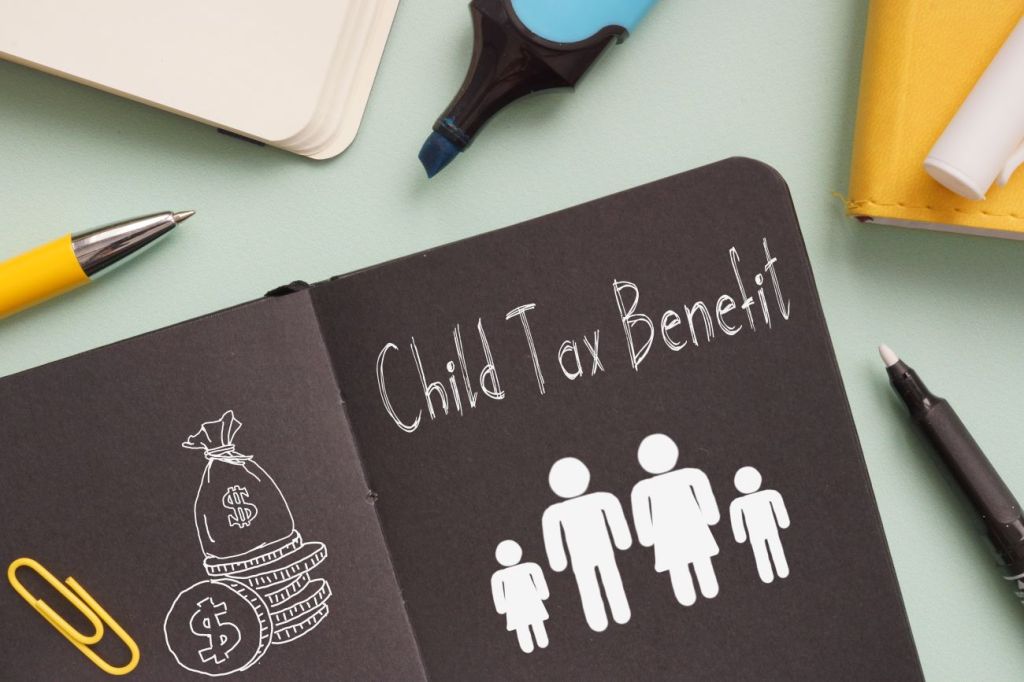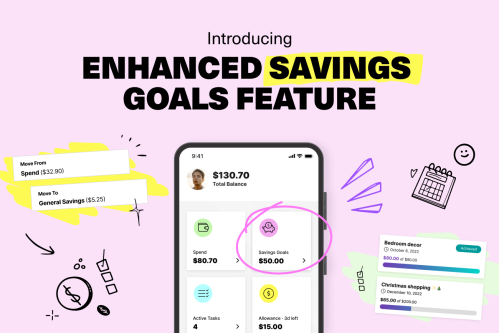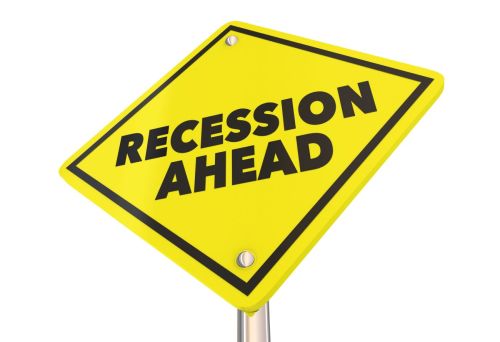Every year, we’re faced with filing out our taxes. For some parents it could be daunting to figure out how to optimize your tax returns. Fortunately, the Canadian government offers a variety of tax credits that can help families reduce their overall tax burden.
With the cost of living on the rise, understanding tax definitions and any benefits you can claim could help you with your living expenses. In this guide, we’ll provide an overview of what tax deductions are available to Canadian families and highlight which ones you may be eligible to claim.
What are tax deductions?
Tax deductions are amounts that you can subtract from your taxable income which reduces the amount of tax you owe to the Canada Revenue Agency (CRA). In Canada, there are federal and provincial/territorial tax deductions.
Why do tax deductions matter for families?
Tax deductions can play a significant role in helping families reduce their overall tax burden. They may lower your taxable income, resulting in a lower tax bill. Additionally, tax deductions could help you maximize your tax refund and receive more money back from the government. For families, tax deductions may be particularly useful in offsetting costs associated with raising children, such as childcare, education and medical expenses.

9 family tax deductions you could claim
Here’s an overview of each deduction, the criteria for eligibility, and the maximum amounts for 2023.
1. Canada child benefit (CCB)
The Canada child benefit (CCB) is meant to help families who take care of children under the age of 18. You can apply through birth registration, online through the CRA website, or by mail.
If you have shared custody of children, then each parent will receive 50 per cent of the payment. However, if the child lives with the parent part-time, then you’ll have to determine whether you have shared custody based on your living arrangements. Understanding these details can help improve your co-parenting finances.
To calculate what your CCB payments could be, you can use the child and family benefits calculator. Payments typically occur during the third week of every month. Be sure that you and your partner file your taxes each year to continue receiving any CCB you are eligible for.
2. Child care expenses
Parents who pay for child care expenses in order to work, carry on a business, attend a school or conduct research, may be eligible to claim these expenses on their tax return. The child must be under the age of 16 and dependent on you or your partner for support. Eligible expenses may include caregiver payments, daycares, day camps, and boarding schools.
Here are the amounts you can claim:
- $8,000 for children under the age of seven at the end of the year
- $5,000 for children over the age of six at the end of the year and under 16 anytime during the year
- $5,000 for children over the age of 15 with a physical or mental impairment.

3. Eligible dependent amount
If you were single, separated, divorced, or widowed and supported a dependent who lived with you at home during any time of the year, then you may be eligible for this tax credit.
An eligible dependent is considered to be either:
- your parent, grandparent
- your child, grandchild, or sibling and was under the age of 18 or has a physical or mental impairment.
You can claim between $2,350 to $7,525 depending on the age and whether they have any physical or mental impairments. Only one person can claim this amount when they file their tax return. So, be sure to have a conversation with your partner to agree on who will be responsible for filing this claim. In the event that the CRA asks for supporting documents, it may be helpful to have a signed statement from a medical practitioner describing when the impairment started and how long it may last.
4. Canada caregiver credit
For individuals who support a family member who has a physical or mental infirmity, the Canada caregiver credit (CCC) is a tax credit that may be offered to you. To be eligible to make a claim, the person who is dependent on you must be living with you and depend on you for support. This means they rely on you to provide them with basic necessities such as food, clothing, and shelter.
You may be able to claim the Canada caregiver credit for:
- your (or your partner’s) child or grandchild
- your (or your partner’s) parent, grandparent, brother, sister, uncle, aunt, niece, or nephew
The amount you can claim will depend on your relationship with that individual, their net income, if any additional credits have been claimed and your overall circumstance. This could range from $2,350 to $7,525.
While you do not have to provide any documents when you submit the claim, the CRA may ask for a medical note from a practitioner indicating when the impairment started and how long it may last.
5. Medical expenses
Another common deduction is medical costs, which you can claim for yourself, your spouse, and dependent children under 18. Some of the eligible expenses include prescription drugs, dental services, fertility treatment, vision devices, and medical equipment.
You can claim only the portion of your medical expenses that are not covered by a health insurance plan. You’ll need to enter the lesser of the following amounts: 3 per cent of your net income or $2,759. It may be beneficial for the partner with the lower net income to file this claim. It’s good practice to keep a good record of all your medical receipts and prescriptions in case you are audited.

6. Canada Dental Benefit
The Canada Dental Benefit is a new interim tax credit available to help reduce dental costs for families earning less than $90,000 annually. Parents can apply if their child is under the age of 12 and does not have dental insurance.
Applications are open until June 30, 2024 for:
- Dental care received between July 1, 2023 and June 30, 2024
- One additional payment if you meet the criteria.
You can apply online through the CRA using My Account or by phone. You’ll need to have your child’s dental care provider, the date of the appointment, along with your and your partner’s employment information. Make sure to keep a copy of the dental care receipts.
Based on your family’s net income, the payment you may receive could be $260, $390 or $650 per child. If parents have shared custody, each parent will receive half of the total amount.
7. Children’s Fitness Tax Credit
The Children’s Fitness Tax Credit is a tax credit designed to encourage families to get their children involved in physical activities.
The credit is only available in:
- Manitoba
- Newfoundland and Labrador
- Quebec
- Yukon.
To be eligible, you must have incurred expenses for a physical activity program for a child at the beginning of the year for which you are claiming the credit. The amount of the credit is based on the number of eligible expenses incurred and varies depending on the province.
Here’s a breakdown:
Manitoba fitness tax credit
Families who live in Manitoba can claim for a fitness tax credit of up to $500 per child. Young adults from ages 16 to 24 are also eligible to claim this tax credit. If approved, an annual non-refundable tax credit of $54 per child/young adult is given. This amount can be doubled if the child or young adult has a disability. To qualify, the fitness program must be a supervised weekly program that lasts eight weeks or five consecutive days.

Newfoundland and Labrador physical activity tax credit
Families in Newfoundland and Labrador can receive a refundable tax credit of up to $2,000 per family for enrolling in an eligible program of physical activity. You can submit a claim for yourself, a spouse or common-law partner, or a child under the age of 18. One parent can claim the entire amount themselves or split the amount between you and your partner.
Quebec tax credit for children’s activities
Residents of Quebec who have registered their children in a program that focuses on either physical, recreational, artistic, or cultural activities, and have a family income that does not exceed $155,880 can apply for this tax deduction. Parents can claim up to $500 and they’ll receive a 20 per cent tax credit (total of $100 per child). For children who have a physical or mental impairment, parents can claim up to $1,000 per child and receive up to $200 per child.
Yukon children’s fitness tax credit
For parents in Yukon who have signed up their child under the age of 16 for a physical activity program or membership, you can claim up to $1,000 per child. The refund you’ll receive is 6.4 per cent of your eligible fees, which equals $64. If you have a child with a disability (under the age of 18), you can claim an additional $500 when you file your tax return.
8. Home office expenses
Many Canadians continue to work from home as a result of the COVID-19 pandemic. The home office tax credit helps employees who work from home cover some related expenses such as utilities (heat, water, and electricity), minor repairs, internet usage, and rent. Employees whose incomes are commission-based may also be eligible to claim home insurance, property taxes, and the lease of electronics (e.g. a cell phone, laptop, tablet, and fax machine).
The temporary flat rate method does not apply to the 2023 tax year. Instead, you’ll need to calculate your expenses using the work from home detailed method which is based on the actual amounts you paid and will require supporting documentation.
9. GST/HST tax credit
The GST/HST tax credit helps families with modest incomes to make up for the amount of GST and HST they pay. These tax-free payments are given out on a quarterly basis. When you file your taxes, you’ll automatically be assessed for this tax credit. The amount you receive may depend on your family’s net income and the number of children in your household. If you are eligible to receive this credit, depending on your relationship status and the number of children you have, the amount can range from $103.30 to $1,247.30 per year.

5 steps to claim tax deductions for your family
Here are the steps families can take to apply for any tax deductions that they might be eligible for.
1. Search for tax deductions
You can check which benefits you qualify for by using the Government of Canada Benefits Finder tool. It will ask you a series of questions and provide you with customized results.
2. Understand eligibility criteria
Familiarize yourself with the eligibility criteria and the specific conditions you must meet before you submit your claim.
3. Gather necessary documentation
Take care to have the necessary documentation to support your claims, such as receipts, medical notes, and any other proof of payment that the Canada Revenue Agency (CRA) may require.
4. Submit your filing with the CRA
When you have all your supporting documents ready, the final step is to submit your tax return with the CRA. For the majority of Canadians, the deadline to submit your tax return is April 30, 2024. If you are self-employed, you have until June 17, 2024 (as June 15 falls on a weekend) to submit your tax return.
5. Check for uncashed cheques
Did you know that $1.4 billion worth of Canadian tax refunds remained uncashed as of August 2022? You can verify through My Account on the CRA website to see if you have any uncashed cheques dating back to 1998.
High five for filing your tax return!
Once you’ve filed your taxes, you can take a deep breath and give yourself a pat on the back! As parents, you’ve done a great job in optimizing your tax return to reap all the (financial) benefits available to you and your family.
Showing your kids how you file your taxes each year can also help them better understand how some of your ongoing expenses can be reimbursed with the help of tax deductions. The earlier they learn, the more practice they can get. Sharing this experience with them could give them a boost of confidence when they start earning income and need to file taxes for the first time.
A smart way to teach your kids about tax deductions and finances
In addition to taking advantage of available tax deductions, teaching your kids about responsible money management and financial literacy is key to building a bright financial future for your family. Mydoh is a great tool to help you get started. With the Mydoh app and Smart Card for teens, you can guide your kids on their financial journey, teaching them valuable skills that will serve them for a lifetime.
Download Mydoh today and give your family the gift of financial literacy.
This article offers general information only and is not intended as legal, financial or other professional advice. A professional advisor should be consulted regarding your specific situation. While the information presented is believed to be factual and current, its accuracy is not guaranteed and it should not be regarded as a complete analysis of the subjects discussed. All expressions of opinion reflect the judgment of the author(s) as of the date of publication and are subject to change. No endorsement of any third parties or their advice, opinions, information, products or services is expressly given or implied by Royal Bank of Canada or its affiliates.

Teach Your Kids How To Earn, Spend & Save Money
with the Mydoh App &
Add up to five kids and two parents on one account.












